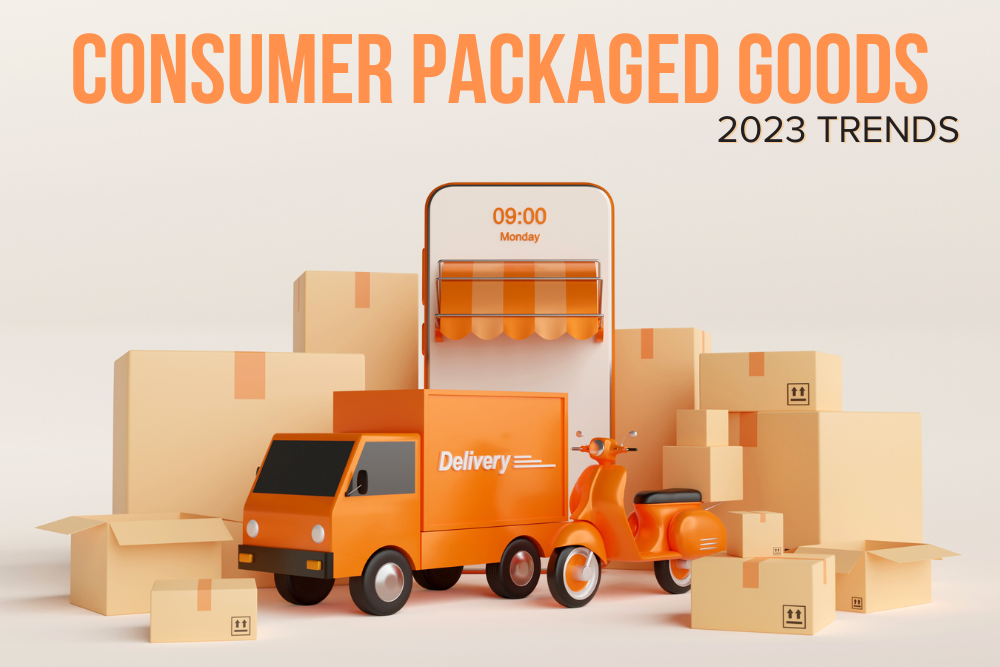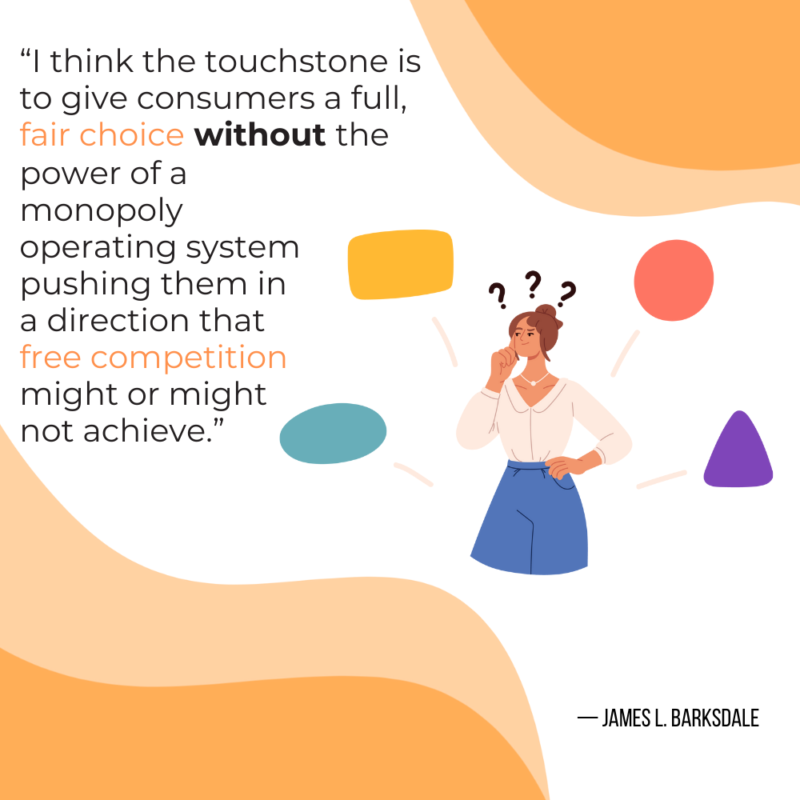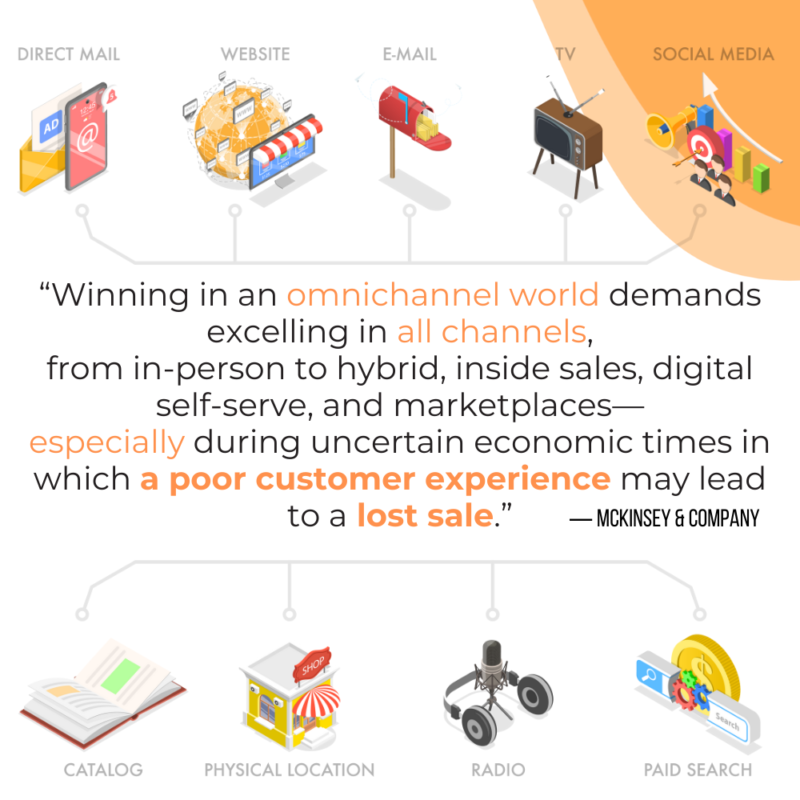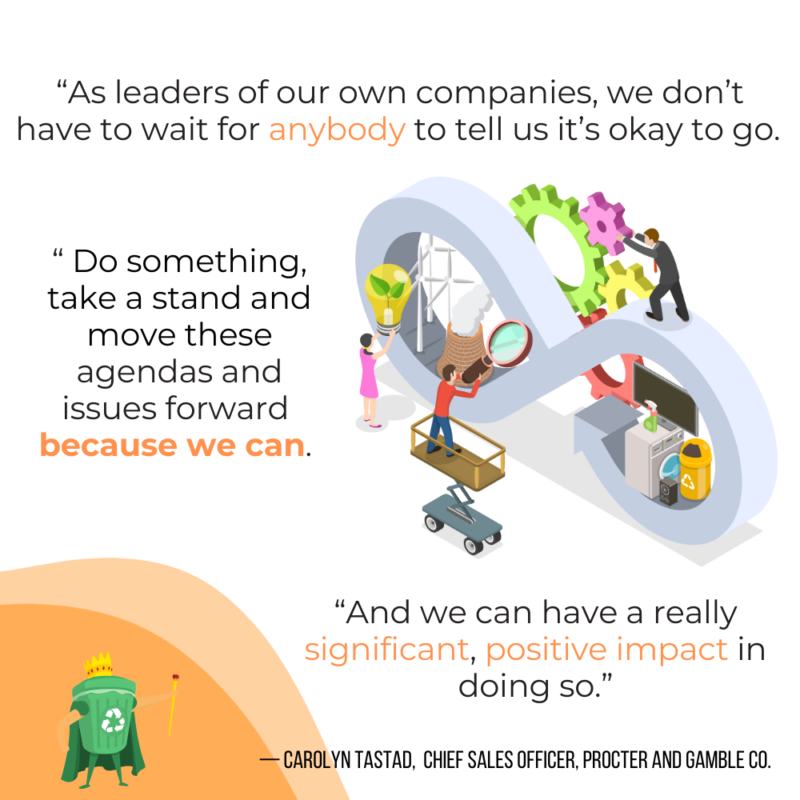Put a hand to your ear and listen – can you hear that? The winds of change are howling through the consumer packaged goods (CPG) industry.

Table of Contents
New trends and technologies are reshaping everything from product development to marketing and delivery. It’s an exciting time, but also a challenging one for both stalwart brands and scrappy startups looking to thrive.
It seems that there are at least 9 most pivotal trends propelling the CPG industry into the future. But why do they matter?
Why Bother With These Trends?
Like shifting winds that affect any rocket’s trajectory, consumer preferences constantly evolve. And in today’s digital age, change comes fast and furious.
For CPG companies, it’s all about surfing these wild waves of change. You either ride them like a pro or get wiped out. No in-betweens.
Keeping an eye on the latest fads is your ticket to really vibing with your audience. It’s all about knowing what makes them click to get them onboard.

And if you’re smart, you’ll see where things are headed way before the crowd does. Being ahead of the curve is where the magic happens.
In this ever-changing world, CPG brands must stay on their toes. Instead of just getting tossed around by every new trend, it’s about knowing when to pivot and when to hold your ground.
By tuning into what the crowd wants, smart brands stay on top. Those who adapt fast are the ones who’ll thrive in this whirlwind of change and break the atmosphere.
9 Consumer Packaged Goods Trends
Let’s be real, keeping up with and getting ahead of the trends is the secret sauce. For CPG brands wanting to dance with the trends and not get left behind, you gotta be on high alert. No snoozing off! With that said, let’s unpack the nine pivotal trends shaping the CPG landscape.
1. The Race to DTC

Like hounds unleashed from the gate, big CPG companies are bolting into the direct-to-consumer (DTC) space. They’re doing it by acquiring digital-native competitors, launching brand new DTC brands, and selling directly to consumers online.
With nimbler challengers nibbling at market share, the race is on for incumbents to own the DTC space themselves. Products delivered right to your door, on your terms? Sounds like a winner to me. And, to sharp thinkers in industries like:
Family Fun & Relationships
- UnboxBoardom (Board games)
- Awesome Pack (Customized family games and activities)
- Board Game Bento (Monthly surprise board game selection)
- The Adventure Challenge (Family or date night challenges)
- DateBox Club (Themed date night activities)
Hot Meal & Grocery Delivery
Food, Beverage & Snacks
- Daily Harvest (Fresh, frozen meals)
- Magic Spoon (Low-carb cereal)
- ButcherBox (Organic meat delivery)
- Winc (Wine subscription)
- SnackCrate (Customizable international snacks)
- Trade Coffee (Coffee subscription)
Online Marketplaces
- Thrive Market (Organic and natural products)
- FreshDirect (Online grocer)
- Caviar (Premium restaurant food delivery)
- Postmates (Local delivery of various products)
Niche
- CatLadyBox (For cat lovers)
- Magic, Delivered (For Harry Potter fans)
- The Inky Box (For calligraphy enthusiasts)
- Kawaii Box (All things cute from Japan & South Korea)
Home & Pets
- Chewy (Pet food and supplies)
- Squawk Box (Parrot supplies)
- Parachute Home (Home essentials)
- Article (Modern furniture)
- Rockets of Awesome (Kids clothing)
- Lovevery (Educational toys)
Skincare & Wellbeing
- SmileDirectClub (Teeth aligners)
- The Ordinary (Affordable skincare products)
- Drunk Elephant (Clean skincare products)
- Tubby Todd (Baby skincare)
- Hims & Hers (Health and wellness products)
And these are just skimming the surface. These platforms and services, along with many others, are capitalizing on the DTC trend, offering consumers the convenience they crave in today’s fast-paced world. Whether it’s food, groceries, or other essentials, the ability to order online and have products delivered directly to one’s doorstep is reshaping the way we shop and consume.
While established brands are racing to dominate the DTC space, they’re not the only players in the game.
2. Challengers Nipping at Heels
Speaking of nimble competitors, scrappy DTC brands are giving giants like Unilever and P&G a run for their money. Semi-newcomers like Dollar Shave Club and Harry’s are slicing into the shaving market. And HelloFresh and Blue Apron are chopping up meal kits while Misfits Market cuts down grocery bills and food waste.
Not only are they stepping into their respective arenas, but they are changing the way we think about service and supply. From beauty boxes to date night game suppliers and beyond, many DTC startups are opting to use subscription models, which bring in a less turbulent stream of recurring revenue.
By removing middlemen, DTC brands build direct relationships and enjoy fatter margins. It’s proving to be worthwhile, too: DTC online sales grew to an estimated $138.03 billion in 2022.
Yet, in this competitive space, rookies can’t rest on their laurels either. While these newcomers are making waves, established retailers are crafting their own strategies to stay ahead. The chase is on.
3. Private Labels Engage the Launch Pad
Retailers like Amazon and Walmart aren’t just selling brands anymore; they’re launching their own, and in multiples. With better control and margins, private label brands are taking flight. AmazonBasics and Great Value are just the tip of the iceberg. Food Lion Grocery has Nature’s Promise and Cha-Ching, Costco has Kirkland, Aldi has Friendly Farms, and the list goes on.
As retailers flex their branding muscles, private labels will likely continue gaining altitude in coming years. As we brace for the rise of private labels, there’s another trend that’s accelerating at breakneck speed. Better get that seatbelt on!
4. Delivery Demands Powerful Thrusters
Although it was already on a steady rise, the pandemic supercharged e-commerce. The result is that fast delivery is now table stakes. There’s a time to hold ‘em and another to fold ‘em, and the obvious winners were those who prioritized speed, for one. Amazon Prime’s one-day shipping raised the bar in 2019, and again with same-day shipping options, plus Walmart launched a similar delivery service called Walmart+ to compete, and many brands began to step up with Covid forcing the issue.
Matching speed with these giants isn’t an easy task, but some smaller brands are up to the challenge. New ultra-fast delivery companies like GoPuff, basically an e-commerce version of 7-Eleven, and including the list mentioned earlier like Instacart and HelloFresh have also entered the space.
When I am feeling miserable at home, unable to taste anything and totally out of medicine, I know I want a thing of Nyquil and a ginger ale to sip on in minutes. Thus, an anecdote supporting that CPG brands need speed proves it! (Well, and the data.)
While speedy delivery remains a priority (get me my toilet paper, stat!), brands are also innovating how consumers interact with them across various channels.
5. Omni-Channel Extensions
Like a choreographed dance with artistic flairs and emotional pairing of music and movement, brands are blending digital and brick-and-mortar experiences into seamless omni-channel shopping. In-store pickup, virtual shopping tools, and more integrate physical and online.

Simply put: purchasing is smooth and seamless across different devices, no matter the space.
With consumers fluidly moving between channels, delivering a unified experience is key. An omnichannel approach provides flexibility.
And these experiences can be mixed and matched. For example, nifty timing for them, Walmart was quickly expanding its in-store pickup kiosk systems and personal in-store shoppers. Leading the way for curbside pickup (or, at least, forging the trail much wider), this experience meshing online shopping with physical pickup is now commonplace in at least 1,700 stores.
Popular makeup chain Sephora also shrinks the gap between virtual and reality by using online resources to enhance the in-store experience. They do so by offering in-store tablets so that customers in their shops can access their online “Loves,” or shopping lists for an easy spending spree.
As brands seamlessly merge online and offline experiences, their marketing strategies are also evolving to reach consumers wherever they are – literally and figuratively.
6. Marketing Blasts into Multi-Channels
Marketing is grooving to a new beat, diversifying across platforms like TV, digital ads, and even influencers. From celebs to TikTok stars, everyone’s joining the launch party. Take PepsiCo, for instance, jamming with gaming influencers like Dr. DisRespect.
To really vibe with the audience, brands are getting creative. Just look at Kraft Mac & Cheese’s animated shorts – pure marketing gold!
And with tech on their side, big names like P&G are using AI to fine-tune their strategies, targeting just the right folks. In this multi-channel world, it’s all about orchestrating a harmonious strategy.
So with consumers fragmented across channels, how can brands orchestrate a cross-channel strategy? Here are some ways to optimize your omni-channel marketing approach:
Actionable Tips: Optimize Your Multi-Channel Marketing
[expand title=”Actionable Tips: Optimize Your Multi-Channel Marketing“]With consumers fragmented across channels, brands need an orchestrated cross-channel strategy. Here are some ways to optimize your omni-channel marketing approach:
- Collect first-party data across all brand touchpoints, from your website to in-store interactions. Unified customer insights allow sharper targeting, as P&G does across its owned channels.
- Use AI and algorithms to make decisions based on performance data. As Coke’s partnership with OpenAI shows, AI can generate personalized creative at scale.
- Test emerging formats like influencer marketing to complement traditional channels. Meet audiences where they are, as Coke is doing through new partnerships.
- Continuously evaluate campaign effectiveness per channel and reallocate spending accordingly. Look for efficiencies like P&G achieved through its AI-powered media buying.
- Prioritize flexible formats that work across platforms. Pepsi’s rebrand aims to make its visual identity adaptable to digital mediums like Web3. Creative should flow seamlessly from TikTok to YouTube.
- Blend digital tools with real-world experiences for an integrated consumer journey. Offer QR codes in stores to link physical and online.
- Automate menial tasks through AI to focus human talent on strategy and innovation. Let data inform next-best actions.
- Test emerging formats like gaming, retail media, and influencer marketing to complement traditional channels. Meet audiences where they are, as evidenced by PepsiCo’s gaming partnerships.
With testing and optimization, brands can choreograph channels into a cohesive experience. Meet consumers through the right mix of physical, digital and automated touchpoints.[/expand]
While brands harmonize their marketing efforts, there’s a growing emphasis on aligning with values dear to consumers, like sustainability.
7. Sustainability Is the Fuel

Consumers increasingly demand that brands walk the walk on sustainability. From product materials to climate change stance, ethics matter. Brands staying silent on issues face being left behind – and that’s because to the customer, climate change is ranked highly as a very or extremely serious matter.
As a millennial who partook in the killing of the napkin industry and owning the blame for putting retail restaurants out of business because I choose to cook at home, I can support the argument that this is happening, at least in my (rental) house.
Since eco-minded consumers vote with their wallets despite financial hardship, sustainable business practices will likely continue gaining altitude. Companies that fail to board the sustainability rocket may face a bumpy road ahead.
As sustainability propels brands forward, there’s another trend elevating the industry: the focus on self-care.
8. Self-Care Soars
As a certified health coach, I can confirm – consumers are also embracing self-care products like never before, thanks to Millennials (Go Zips!). From skincare outpacing makeup to CBD wellness products taking off, the self-care category is skyrocketing. (And that’s not touching the mental health apps multiplying daily.)
Brands tailored to shoppers’ unique needs through customization continue gaining traction. For example, Kind Snacks keeps marketing simple and focused on highlighting its core ingredients, like whole almonds.
The self-care space shows no signs of slowing down. Brands able to effectively communicate their purpose in improving wellbeing will likely continue seeing growth.
In tandem with this emphasis on well-being, there’s a rising demand for personalized experiences in the CPG sector.
9. Personalization Takes Flight
Speaking of customization, product personalization is blowing up. Subscription services like BarkBox quiz customers about pets to tailor boxes. Beauty brand Tatcha‘s online quiz helps customize skincare routine recommendations.
And, my personal favorite brand, Chewy, is known for sending random or curated gifts to their customers, be it portraits of the customer’s pet, sympathy cards and flowers for the loss of a furry friend, and beyond.
As consumers come to expect this tailored touch, personalization will likely keep propelling higher. Brands that provide a customized experience can soar ahead. I rarely vouch for customer service companies personally, but here I am, letting you in on my softer, Chewy-er side, twice in one blog. So you know it’s true!
What’s the Future Looking Like?

People are all about that green life, digital vibes, and celebrating diversity. Eco-lovers are putting their money where their mouth is, so sustainable moves are the way to go.
But here’s the tea: brands need to be genuine about diversity. There’s chatter about investing more in diverse suppliers, but there’s still a long way to go.
Staying digital is the name of the game. And speaking of games, esports and gaming are blowing up big time. Brands that fail to jump on this train risk getting left behind on such accelerating trends.
Related reading: The Future of CPG: Top Trends Shaping the Industry in 2023
– Seller Ap
Don’t Get Left Behind
Change can be a wild ride, but if you’re agile and all about the customer, you’re golden. CPG brands that vibe with the evolving needs are the ones leading the way into the exosphere.
Buckle up, because it’s gonna be a thrilling journey!



